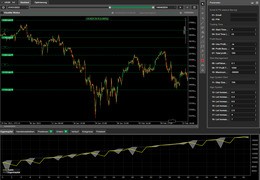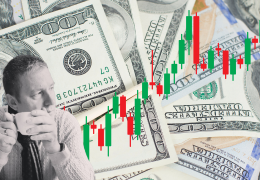Between reality and illusion If you want to know what trading really means—beyond luxury cars, piles of cash, and...
Search in blog
Blog categories
- FAQ – Your guide through the world of finance and technical facilities (2) click
- Daytrading Almanac (27) click
- Press release (23)
- Educational (26) click
- Projects (9)
- Chart analysis (39) click
- Trading bots for cTrader (11)
- AI in trading (5)
- Trading Strategien (11)
- Trading signals and stock market letters (46)
Latest posts

When it comes to traders, social media platforms often create a rather one-sided image: a young face smiling at the...

The TegasFX Instant Funding program sets a new standard for traders seeking quick access to capital without having to...

Backtesting trading strategies is an essential tool for traders who want to validate their methods across historical...

introduction In the world of trading, it can be challenging to balance the intense market activity and the rapid...
Popular posts





Featured posts





Photo gallery
No featured images
Archived posts
Top authors
-
 Christian Lill 70 Posts View posts
Christian Lill 70 Posts View posts -

-

-

-

Understanding the fundamentals and structure of the real estate market
Basics and structure of the real estate market
The real estate market – a complex system with a profound impact on the economy
The real estate market is one of the most important sectors of the economy. It includes not only the purchase and sale of land and buildings, but also their development, management and financing. To fully understand the importance of the real estate market for the economy, it is necessary to understand its structure and the diverse factors that influence it.
Structure of the real estate market
The real estate market can be divided into three main areas:
-
Residential real estate : This sector includes single-family homes, multi-family homes and condominiums. It focuses on people's needs for a home, but investors are also active to create assets and generate income.
-
Commercial real estate : Office buildings, retail spaces, warehouses and other commercial properties fall into this category. They are a critical factor for economic development as they provide the infrastructure for businesses.
-
Industrial properties and special properties : These include factories, logistics centers and special buildings such as hotels or leisure facilities. They serve specific economic activities and often require tailor-made solutions.
Factors influencing the real estate market
Economic growth
The demand for real estate is closely linked to economic growth. In periods of economic upturn, demand for residential and commercial space increases, which in turn can lead to higher prices and rents.
Interest rates
The cost of financing real estate depends largely on interest rates. Low interest rates can heat up real estate markets, while rising interest rates can have a cooling effect.
Demographics
Population development plays a crucial role. For example, an ageing population leads to a change in demand for housing types.
Policy and regulation
Tax laws, building regulations and funding policies influence the real estate market. Changes in legislation can lead to significant shifts in market activity.
Technological progress
New technologies are changing the way real estate is built, managed and marketed. This can increase efficiency and open up new market opportunities.
The real estate market as an economic indicator
The real estate market is an important indicator of a country's economic health. An increase in construction activity can indicate confidence in the future and economic stability, while a decline is often a harbinger of economic trouble.
Construction industry as an economic engine
The construction industry is an important economic factor. It creates jobs and generates demand for materials and services.
Real estate prices and consumer behaviour
Changes in property prices can influence consumption behavior because they affect household net worth.
Mortgage market
The mortgage market is a reflection of the credit industry and the financial health of consumers, and difficulties in this area can have far-reaching consequences.
In the next blog post, we will take a deeper look at real estate market cycles and analyze the economic drivers behind the fluctuations. We will see how lessons learned from past cycles can influence the decisions of investors and politicians.
Leave a comment
Related posts
 Day Trading Almanac Foreword
Day Trading Almanac Foreword
 History of day trading
History of day trading
 Choosing the right trading platform
Choosing the right trading platform
 Trading bots: revolution or risk?
Trading bots: revolution or risk?
